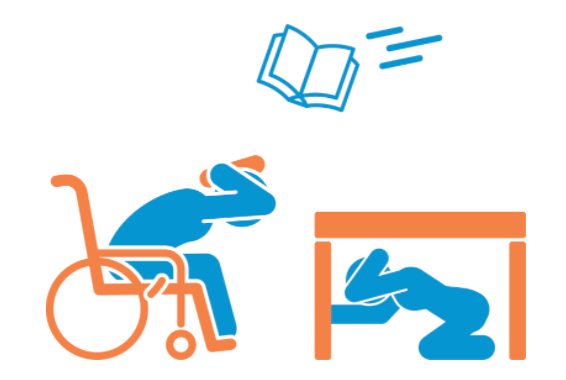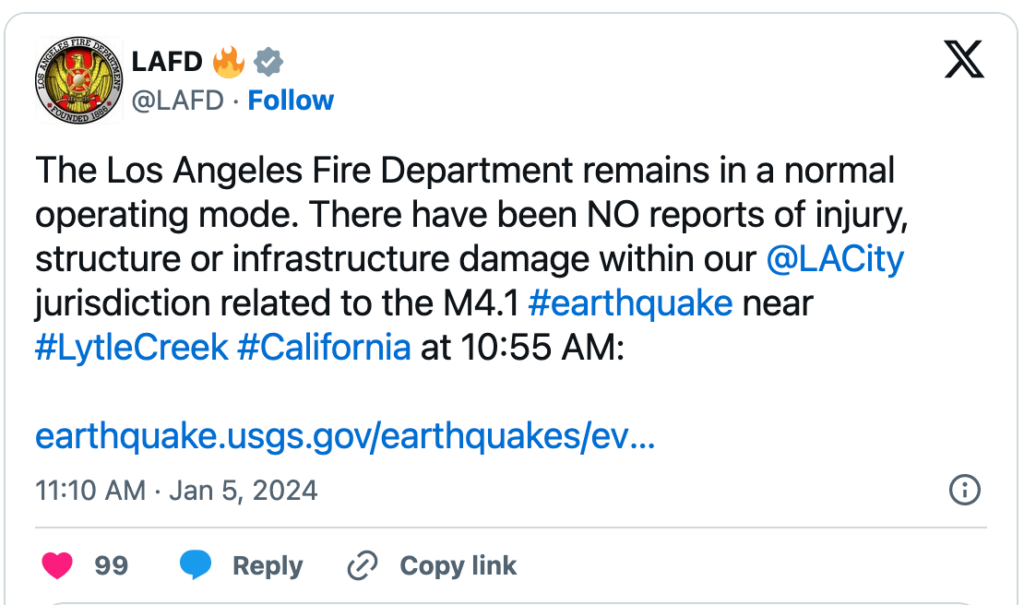2 earthquakes hit Southern California this week. Are you ready for the big one?
LOS ANGELES – A 4.2 magnitude earthquake rattled Southern California on Jan. 5, according to the US Geological Survey.
The epicenter was less than a mile from Lytle Creek, about 16 miles north of downtown San Bernardino.
The quake struck shortly before 11 a.m.
Both the Los Angeles Fire Department and San Bernardino County Fire Department said there were no reports of infrastructure damage or injuries.
“No reports of damage or calls for service related to the incident,” the San Bernardino County Fire Department said in a statement.
It was the second earthquake in the area this week.
The new year was off to a “rocking start,” the Pasadena Fire Department said after the quake struck at 8:27 a.m. on New Year’s Day about 11 miles south of Rancho Palos Verdes.
It measured 4.1, with a depth of about 7 miles, according to the USGS. More than 4,000 people from as far away as Lompoc and Camarillo reported feeling the tremor, the USGS said.
The Southern California quake was “completely unrelated” to the 7.5-magnitude earthquake earlier in the day in Japan, seismologist Lucy Jones said on X.
State officials are urging residents to be prepared in the event of a massive natural disaster.
The Earthquake Country Alliance provides the following tips:
Prepare
Before the next big earthquake we recommend these four steps that will make you, your family or your workplace better prepared to survive and recover quickly:
Step 1: Secure your space by identifying hazards and securing moveable items.
Step 2: Plan to be safe by creating your emergency plan and deciding how you will communicate.
Step 3: Organize emergency supplies in convenient locations.
Step 4: Minimize financial hardship by organizing important documents, strengthening your property and considering insurance coverage.
Survive And Recover
During the next big earthquake, and immediately after, is when your level of preparedness will make a difference in how you and others survive and can respond to emergencies:

Drop, Cover and Hold On or other recommended actions such as Lock (wheels), Cover and Hold On – if you feel shaking or get an alert. Illustration: Earthquake Country Alliance
Step 5:
Drop, Cover and Hold On or other recommended actions such as Lock (wheels), Cover and Hold On – if you feel shaking or get an alert.
Step 6: Improve safety after earthquakes by evacuating if necessary, helping the injured and preventing further injuries or damage.
After the immediate threat of the earthquake has passed, your level of preparedness will determine your quality of life in the weeks and months that follow:
Step 7: Reconnect and Restore daily life by reuniting with others, repairing damage and rebuilding community.


